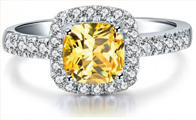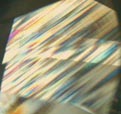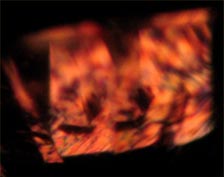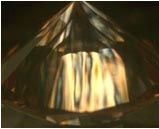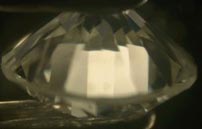TNJtv.com | Education
How to identify lab-grown CVD diamond |
Synthetic diamonds are being produced in large quantities by companies like Adamas, AOTC (Advanced Optical Technologies Corporation) which sells them through D.NEA, Chatham, Gemesis, IIa Technologies, New Age Diamonds, Apollo Diamond now taken over by Scio Diamond Technology Corporation, Tairus (Thailand and Russia Joint Venture),Takara, Queen Bee etc. In September 2013 it was announced by the CEO of Scio that it will mass-produce lab-grown diamonds in China! Today there are also synthetic diamonds manufactured and marketed in India.
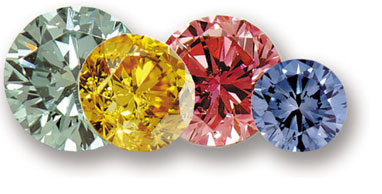 Fig1 Lab-created diamond by Chatham
Fig1 Lab-created diamond by Chatham
Lab-created diamonds or synthetic diamonds are now commercially available. These synthetic diamonds are available on-line they are available on demand and are also frequently detected mixed in bulk packets of natural diamonds in gem testing laboratories. It is time we accepted the fact that synthetic diamonds are going to increase in large numbers as the growth is 100% and will increase year by year. By 2015 synthetic diamonds will be very common and by 2020 consumers will demand lab-grown diamonds like they ask for the cultured South Sea pearls!
Need of the hour is to have some simple methods to identify these synthetic diamonds.
Let us first know the types of synthetic diamonds available in market. There are basically two types the HPHT (High Pressure High Temperature) and the CVD (Chemical Vapor Deposition).
HPHT Method
Diamonds can be created in laboratory if one can create the environment similar to the one found in the earth’s crust in terms of very high pressure and temperature. The conditions required are ultra high pressures about 6.5GPa (6500 times the normal atmospheric pressure at sea level) and temperatures higher than 1500 degree C and a high tech apparatus (Fig2) called “press” or “belt” to make it happen.
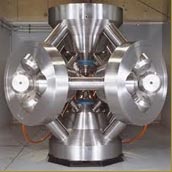 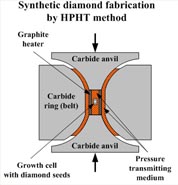
Fig2 HPHT Apparatus used for making Synthetic diamond
CVD Method
In this method for lab-created diamond the particles the carbon atoms required to compose themselves to form diamonds are supplied in vapor form mostly methane gas broken down into carbon vapor by heating or use of super heated plasma (which is easy than actually vaporizing coal or graphite, common sources of diamond). The atoms in form of vapor then solidify over an already present small diamond (seed) (Fig3) and arrange itself in the same order as the atoms in diamond lattice. Imagine the snow falling down to form a giant ice block or water freezing to form a giant ice berg, the method is same except for the conditions, very pure environment and very low pressure.
 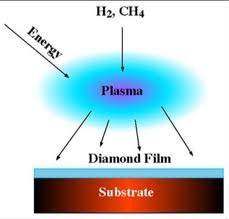
Fig3 CVD process of making synthetic diamond
|
Types of diamonds
In order to understand synthetic diamonds we need to know that most diamonds crystallize in nature with some nitrogen. Depending upon the arrangement of these nitrogen atoms in the diamond crystal, diamonds are classified into types as Type I and Type II.
Diamonds with detectable nitrogen are Type I.
• TypeIa - About 98% of natural diamonds
• TypeIb - All synthetic yellow diamonds, 0.1% of natural diamonds (fancy yellow & green)
The diamonds which have undetectable nitrogen are classified as Type IIa and those with boron are grouped as Type IIb.
• Type IIa - All synthetic colourless diamonds and some pink, 1-2% of natural diamonds (colourless & pink)
• Type IIb - All synthetic blue diamonds, 0.1% of natural diamonds (blue)
Synthetic colourless diamonds are mostly Type IIa produced by CVD process (Fig4). Type Ib (yellow) and Type IIb (blue) are produced by HPHT and in rare case HPHT grown diamonds would be a mix of Type Ia and Type Ib.
In short Synthetic Diamonds are:
Fig4 Colours in Synthetic Diamond Types
Identification
Today synthetic diamonds can be identified by using various techniques. Here we shall see some easier methods to test the colourless diamonds.
1. One can check to see if the diamond is Type IIa—as said before the colourless synthetic diamonds produced by CVD are all Type IIa. There is small handy instrument called SSEF Diamond Type-Spotter. The Type Spotter shows whether the diamond is transparent to shortwave ultraviolet. If you hold the SWUV light over a Type II diamond, the SWUV will pass through the stone and cause the platform of the Spotter to fluoresce green. If there's no green reaction then, it is not a synthetic colourless/near-colourless CVD diamond.
If you see the green, then it is a Type II diamond (Fig 5). Look for evidence that it's a natural Type II diamond, a CVD synthetic, an HPHT-treated diamond, or a CVD diamond that also has been HPHT enhanced.
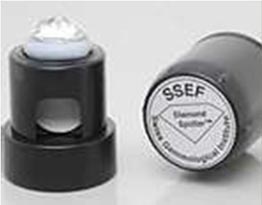
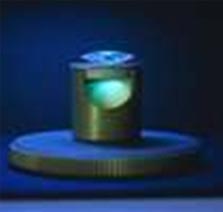
Fig 5 SSEF type Spotter and green Fluorescence
|
|
2. Check the fluorescence using a modified technique. If the stone is a Type II diamond, examine the stone with an ultraviolet lamp that provides long-wave and shortwave emission. Note the reaction under each wavelength. To use the ultraviolet lamp to determine whether the stone is a natural or synthetic diamond, do the following:
• View the diamond on a black background. If possible, place the stone in a table-down position.
• Hold the lamp as close to the diamond as possible.
• Be sure the room is completely dark. The stone must be viewed in total darkness to see the reaction.
• Note the reaction to long wave; repeat using shortwave.
If the diamond fluoresces blue (Fig 6) then it is not a synthetic. Natural diamonds can show fluorescence of almost any colourless but the most common fluorescent colours seen are blue, yellow, and white. However, blue fluorescence is positive confirmation of natural diamond—only natural diamonds fluoresce blue (as of date).
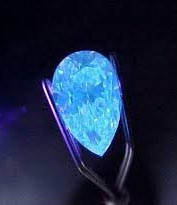
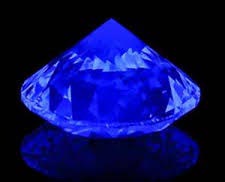
Fig6 Only natural diamonds fluoresce blue
3. Synthetic diamonds typically show the strongest reaction under shortwave. Whereas natural colourless diamonds which exhibit fluorescence, the reaction is typically strongest under long-wave UV, becoming weaker when viewed under shortwave.
In the case of the new synthetic colourless/near colourless CVD diamonds, the fluorescent reaction to the above technique is distinctive: Dark brownish-red fluorescence under long-wave UV, becoming slightly stronger under short wave ultra violet light, or dark red under long-wave, which changes to moderately strong yellowish/greenish under shortwave, is positive confirmation of synthetic diamond. In some cases, the reaction will be weak-to-moderate greenish/yellowish under long-wave, becoming much stronger under shortwave. This also indicates synthetic. A small number have exhibited phosphorescence under shortwave, which is positive confirmation of synthetic
4. In natural diamonds there are often some cases of plastic deformation, elastic deformation near inclusions, growth striations, growth sector boundaries, dislocations, diamond-substrate boundaries which cause anomalous double refraction in a diamond and it gives rise to an effect called “interference colour” look like rainbow colours (the greater the strain the more intense the interference colour appear to be, like in type Ia diamonds).
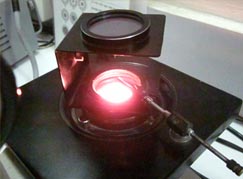
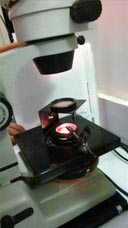
Fig 7 Attachment for microscope
A polariscope uses two polarizing filters (a polarizer and an analyzer) oriented at right angles to each other (“crossed position”), and the diamond to be tested is placed between the two filters.
When a portable polariscope is placed under a microscope (Fig7), even small and melee diamonds can be checked for presence of rainbow colour pattern (indicating natural diamond) or absence of the interference colour pattern (identified HPHT grown or new generation of CVD grown diamonds).
CVD grown diamonds grown by Scio show a columnar structure of interference colours (Fig8) under cross-polarized filters but the new generation of CVD-grown diamonds (Gemesis) will have a very weak pattern or absence of pattern.
|
Fig 8 Interference Colours in Natural and Synthetic Diamonds
5. All of us know it is not economical and financially viable to send all diamonds, especially those under 0.30ct to gem testing laboratories for ascertaining their natural origin. Sometimes the price of the diamond (say a diamond of 0.02ct) may be lower than the testing fees. Another method can be used if we connect a fiber optic tube to an ultraviolet light and focus it on small diamonds as small as 0.05carats then it is possible to observe the zoned fluorescence (Fig9) in synthetic diamonds as well as orange red fluorescence in CVD diamonds.
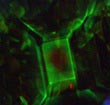
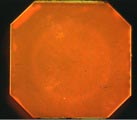 Fig 9 Typical fluorescence pattern for Synthetic Diamonds
Fig 9 Typical fluorescence pattern for Synthetic Diamonds
A shortwave UV lamp for screening synthetic diamonds and cross-polarized filters (especially mounted on a microscope) can be used to a large extent for positive identification of these stones as “lab-grown” diamonds.
6. Diamond Check the new instrument by GIA costing US$23900 also can be used to check diamonds from 0.01ct to 10 ct size stones. It uses 3D imaging and gives results, as “natural” or “non-diamond” or “further lab-testing”. It is said that it takes about 10 seconds to ascertain stones that are natural. So testing is much faster.
 Fig10 DiamondCheck –new instrument by GIA
Fig10 DiamondCheck –new instrument by GIA
Conclusion
Synthetic or lab-grown diamonds are now readily available. Today there are companies which sell the needed equipment to produce synthetic diamonds as turn-key projects! CVD method is faster and can produce colourless and near colourless synthetic diamonds as well as pink, orange coloured diamonds, whereas HPHT gives yellow and other coloured diamonds. It is said to make the venture a success at least 24 CVD units (or multiples of 24) have to be set up. CVD grown diamonds have slight brownish tint which can be improved by HPHT process.
Time has come to accept the fact that the synthetic lab-grown diamonds are going to increase in quantity and quality. Consumers will accept them like they accept the cultured pearls, flux grown emeralds provided there are easy methods to identify them, having said that the “Natural Diamond” formed some millions of years ago in the Mother Earth, will always have its own status and will not lose its shine to any new type of synthetic diamond grown in the laboratory. The demand for natural diamond will never decrease as both the lab-grown diamonds and the mine-recovered will have to co-exist.
|
|




